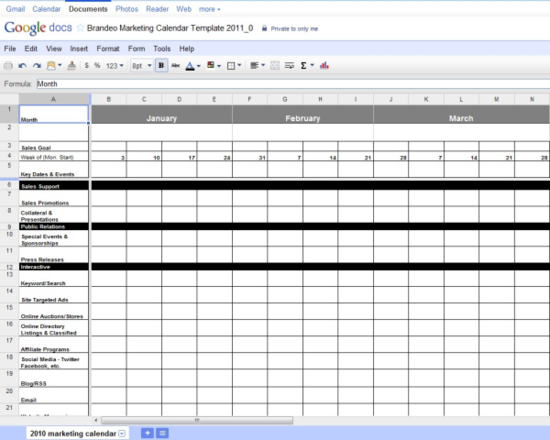may 2011 calendar template
Ethiopia was a monarchy for most of its history, and the Ethiopian dynasty traces its roots to the 2nd century BC. Ethiopia is also one of the oldest sites of human existence known to scientists today, having yielded some of humanity's oldest traces. It may be the region from which Homo sapiens first set out for the Middle East and points beyond. During the Scramble for Africa, Ethiopia was one of only two countries that retained its independence and one of only four African members of the League of Nations. After a brief period of Italian occupation, Ethiopia became a charter member of the United Nations. When other African nations received their independence following World War II, many of them adopted the colors of Ethiopia's flag, and Addis Ababa became the location of several international organizations focused on Africa.
Modern Ethiopia and its current borders are a result of significant territorial reduction in the north and expansion in the south toward its present borders, owing to several migrations and commercial integration as well as conquests, particularly by Emperor Menelik II and Ras Gobena. In 1974, the dynasty led by Haile Selassie was overthrown as civil wars intensified. Since then, Ethiopia has seen a variety of governmental systems. Ethiopia is one of the founding members of the Non-Aligned Movement (NAM), G-77 and the Organisation of African Unity (OAU). Today, Addis Ababa is still the headquarters of the African Union, the Pan African Chamber of Commerce (PACCI) and UNECA. The country has one of the most powerful militaries in Africa and Addis Ababa is the headquarter of the continental African Standby Force (ASF). Ethiopia is one of a few African countries where an indigenous alphabet is still used. Ethiopia also has its own time system and unique calendar, seven to eight years behind the Gregorian Calendar. It has the largest number of UNESCO World Heritage Sites in Africa.
The Greek name Αἰθιοπία (from Αἰθίοψ, Aithiops, 'an Ethiopian') appears twice in the Iliad and three times in the Odyssey. The Greek historian Herodotus specifically uses it for all the lands south of Egypt, including Sudan and modern Ethiopia. Pliny the Elder says the country's name comes from a son of Hephaestus (aka Vulcan) named Aethiops. Similarly, in the 15th century Ge'ez Book of Aksum, the name is ascribed to a legendary individual called Ityopp'is, an extrabiblical son of Cush, son of Ham, said to have founded the city of Axum. In addition to this Cushite figure, two of the earliest Semitic kings are also said to have born the name Ityopp'is according to traditional Ethiopian kinglists. Modern European scholars beginning c. 1600 have considered the name to be derived from the Greek words aitho "I burn" + ops "face".
The term Habesha, strictly speaking, refers only to the Semitic-speaking groups, particularly the Amhara and Tigray-Tigrinya people who have historically dominated the country politically, as well as the Gurage and other smaller communities like the Harari of eastern Ethiopia. However, in contemporary Ethiopia, the word Habesha is sometimes used to describe all people from Ethiopians and Eritreans.[dubious – discuss] Abyssinia can strictly refer to just the northwestern Ethiopian provinces of Amhara and Tigray, as well as central Eritrea, while it was historically used as another name for Ethiopia.

Printable Blank May 2011 Excel

May 2011 Calendar 960x720

May 2011 Calendar Sheet

May Monthly Calendar – 2009

May 2011 Calendar 960x720

May 2011 CD Calendar Template

Image of MAY 2011 Calendar

Download this 2011 Calendar

Printable Blank May 2011 Excel

May 2011 calendar template

2011 Calendar Template With

May 2007 Calendar Template

april may 2011 calendar

april may 2011 calendar

May 2011 Calendar 720x960

May 2011 Calendar Sheet
Modern Ethiopia and its current borders are a result of significant territorial reduction in the north and expansion in the south toward its present borders, owing to several migrations and commercial integration as well as conquests, particularly by Emperor Menelik II and Ras Gobena. In 1974, the dynasty led by Haile Selassie was overthrown as civil wars intensified. Since then, Ethiopia has seen a variety of governmental systems. Ethiopia is one of the founding members of the Non-Aligned Movement (NAM), G-77 and the Organisation of African Unity (OAU). Today, Addis Ababa is still the headquarters of the African Union, the Pan African Chamber of Commerce (PACCI) and UNECA. The country has one of the most powerful militaries in Africa and Addis Ababa is the headquarter of the continental African Standby Force (ASF). Ethiopia is one of a few African countries where an indigenous alphabet is still used. Ethiopia also has its own time system and unique calendar, seven to eight years behind the Gregorian Calendar. It has the largest number of UNESCO World Heritage Sites in Africa.
The Greek name Αἰθιοπία (from Αἰθίοψ, Aithiops, 'an Ethiopian') appears twice in the Iliad and three times in the Odyssey. The Greek historian Herodotus specifically uses it for all the lands south of Egypt, including Sudan and modern Ethiopia. Pliny the Elder says the country's name comes from a son of Hephaestus (aka Vulcan) named Aethiops. Similarly, in the 15th century Ge'ez Book of Aksum, the name is ascribed to a legendary individual called Ityopp'is, an extrabiblical son of Cush, son of Ham, said to have founded the city of Axum. In addition to this Cushite figure, two of the earliest Semitic kings are also said to have born the name Ityopp'is according to traditional Ethiopian kinglists. Modern European scholars beginning c. 1600 have considered the name to be derived from the Greek words aitho "I burn" + ops "face".
The term Habesha, strictly speaking, refers only to the Semitic-speaking groups, particularly the Amhara and Tigray-Tigrinya people who have historically dominated the country politically, as well as the Gurage and other smaller communities like the Harari of eastern Ethiopia. However, in contemporary Ethiopia, the word Habesha is sometimes used to describe all people from Ethiopians and Eritreans.[dubious – discuss] Abyssinia can strictly refer to just the northwestern Ethiopian provinces of Amhara and Tigray, as well as central Eritrea, while it was historically used as another name for Ethiopia.

Printable Blank May 2011 Excel

May 2011 Calendar 960x720

May 2011 Calendar Sheet

May Monthly Calendar – 2009

May 2011 Calendar 960x720

May 2011 CD Calendar Template

Image of MAY 2011 Calendar

Download this 2011 Calendar

Printable Blank May 2011 Excel

May 2011 calendar template

2011 Calendar Template With

May 2007 Calendar Template

april may 2011 calendar

april may 2011 calendar

May 2011 Calendar 720x960

May 2011 Calendar Sheet

0 Comments:
Post a Comment
Subscribe to Post Comments [Atom]
<< Home